Why does the air conditioner freeze up and what to do about it?
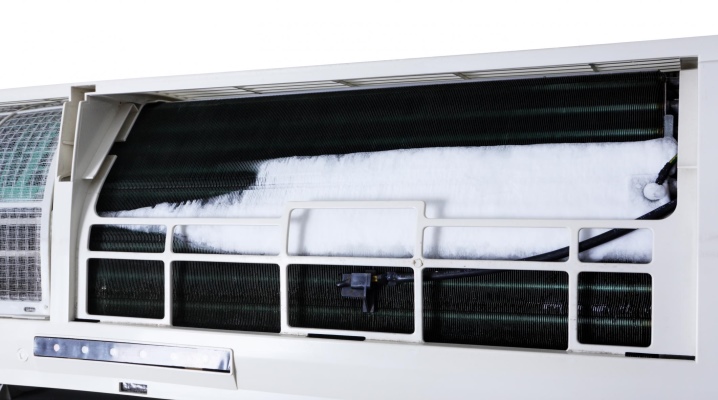
The split system is a complex device, therefore, for the normal functioning of the air conditioner, it is necessary to constantly observe the operating rules, to carry out maintenance in a timely manner. One of the most important violations is the appearance of frost or ice on the internal or external block.
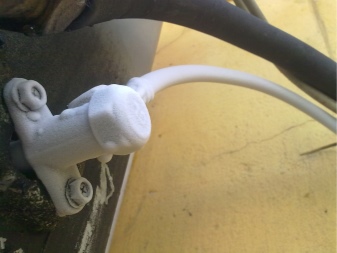
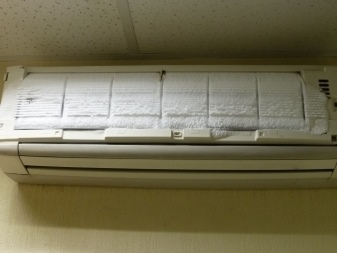
Finding the problem
If you notice that the air conditioner does not cope with the task of cooling the air in the house, and after examining the indoor / outdoor unit, you find that the internal evaporator of the device is covered with frost or completely iced up, you can try to find the cause and fix the problem. To do this, follow these steps:
- turn off the air conditioner (the system must be turned off, as well as unplug the wire from the socket);
- open the case;
- wrap the indoor unit of the air conditioner with a towel to avoid water leakage.
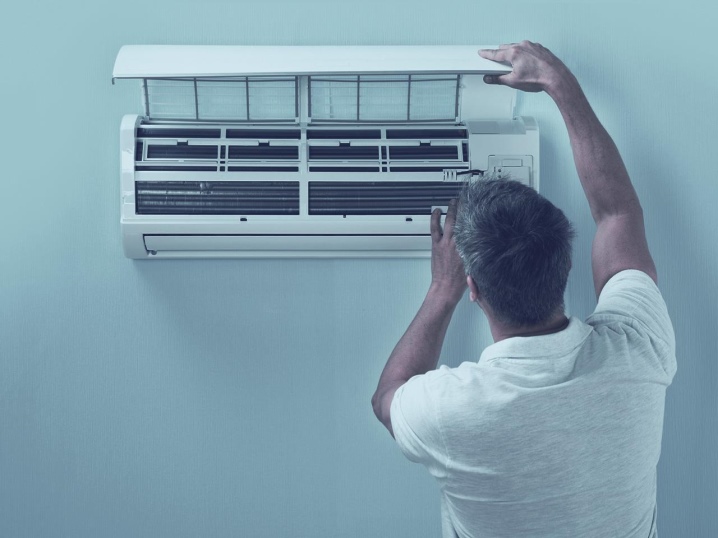
IMPORTANT: Do not turn on the air conditioner until you have identified the problem and solved it.
Weak air flow
One possible reason for the formation of ice may be too little air flow through the evaporator coils. The air conditioner uses a very cold substance (refrigerant) to absorb heat and moisture from the air in the house. Heat exchange takes place in the evaporator coils (the part that is frozen). When warm air passes over these cold refrigerant coils, they absorb enough heat to prevent them from freezing.
But if not enough warm air passes through the evaporator, the heat exchangers filled with refrigerant will not work properly, giving off moisture.
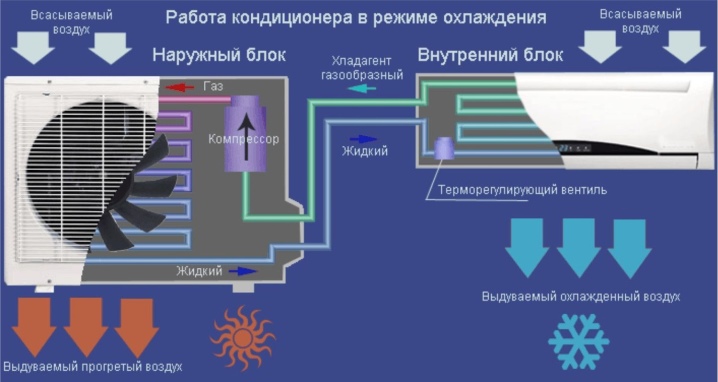
And the accumulated moisture will settle on the freezing coils, so the unit freezes over. You can correct some of the factors causing poor airflow yourself.
- Dirty, clogged air filters. The air filter needs to be checked and replaced.
- Return holes blocked. Make sure no curtains or furniture are blocking the openings. Keep objects at least 60 cm away from return vents to ensure proper airflow.
- Closed ventilation holes. Keep all vents open, even those in rooms or unused areas.


In other cases, you may need professional help, who checks the system and can identify the following conditions causing low airflow:
- wrong size air ducts;
- dirty evaporator coils.
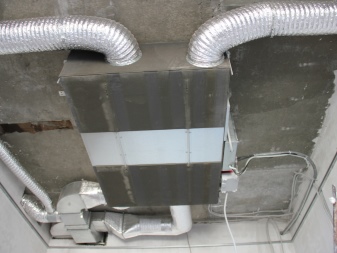
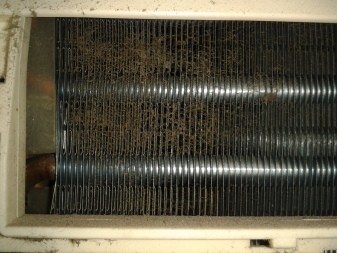
Refrigerant leak
An air conditioning system requires a certain amount of a special substance to work effectively. But over time, wear on the coils can lead to leakage, and when there is not enough of it in the system, the temperature of the refrigerant coils drops and eventually icing occurs.
One way to detect if refrigerant is leaking is to detect a subtle hissing sound anywhere along the refrigerant coil.
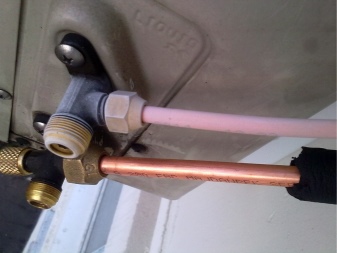
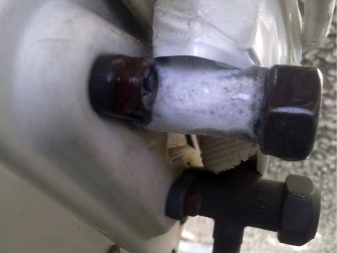
You may not always be able to detect this noise, but if it is still present, then there is a substance leak.
Unfortunately, if a refrigerant leak occurs in the air conditioner, you will need a specialist who can fully inspect the system and diagnose the indoor unit located inside the house and the outdoor unit (i.e. external) located outside. Only licensed professionals can handle the refrigerant as this chemical is toxic. A professional will locate the leak and repair it, then recharge the system with refrigerant.
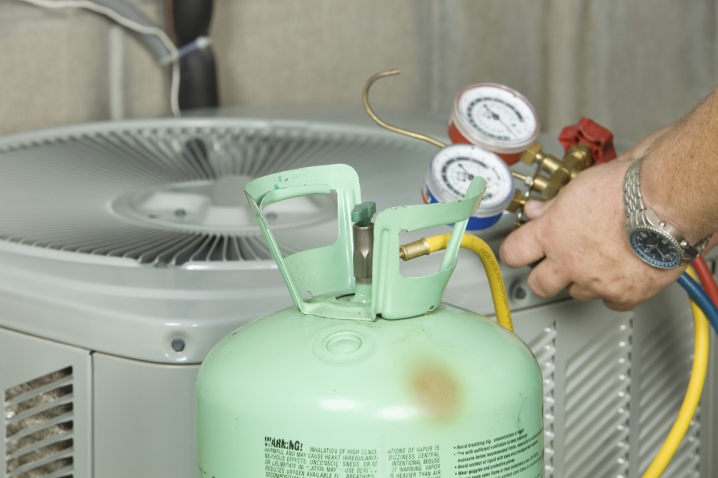
Other reasons
There are other reasons for freezing of the indoor unit, icing of the gas pipe / valve on the outdoor unit, ice formation on the evaporator of the split system:
- in some refrigeration systems, on the contrary, the refrigerant may be in excess, and this can cause the liquid substance to pass through the cooling coil into the suction line, which will also lead to icing;
- faulty refrigerant dosing device, such as a bad thermal expansion valve;
- a poor-quality thin capillary tube with nuts, a valve, a tap (a simpler refrigerant dosing device, which also exists in refrigerators, dehumidifiers and window air conditioners) will not fail, letting in too much refrigerant, but it may allow little or no refrigerant to pass through if its inner cavity is clogged with debris;
- faulty automatic defrost control or improper timer control (less common in residential air conditioning systems);
- a break in the connection of the air conditioner with a radiator or heat pump, that is, a break in the connection between the high pressure hot refrigerant line and the cold suction line, which separates the sections of the economizer piping, leaving icing on the suction line, covering the surface with frost.
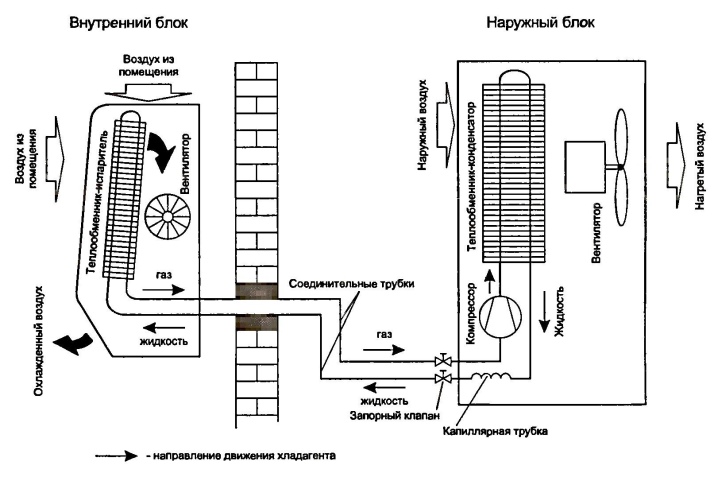
What to do if the indoor unit is frozen, see below.













To let the frozen indoor unit move away from the ice, I turn on the ventilation mode on the indoor unit at medium or high speed, without cooling or dehumidification. And I watch for water or ice that may appear from the indoor unit.
The comment was sent successfully.